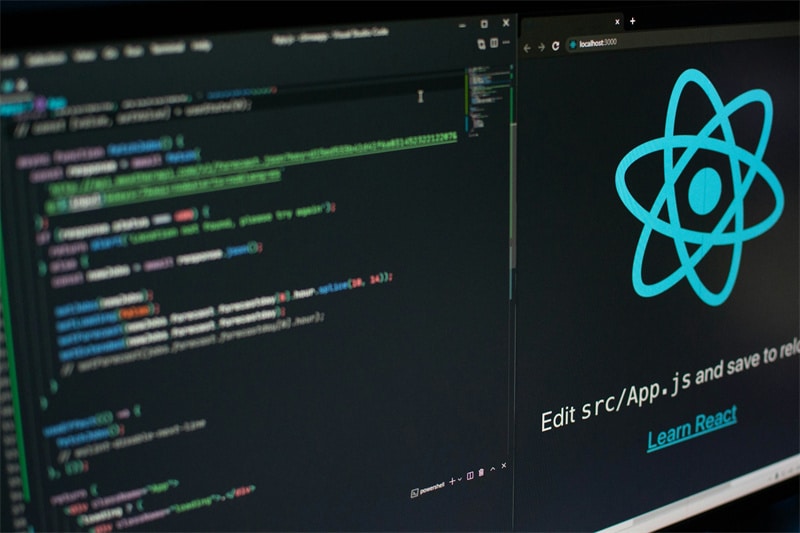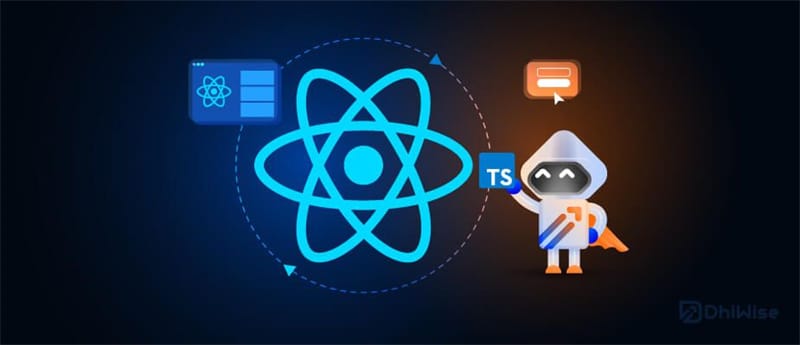
Dive into the dynamic world of React as we dissect current trends and innovations, from paradigm-shifting React Hooks to server-side rendering and the upcoming React 18 release.
Stay ahead in web development by exploring the vibrant React ecosystem, ensuring you're ready for the next wave of advancements and empowered to craft cutting-edge, performant user interfaces.
Examining the Current State of React: Analyzing Trends and Innovations in the Evolving Tech Landscape

In the rapidly advancing field of technology, maintaining a comprehensive understanding of the latest trends and innovations is imperative for both developers and enterprises. React, a JavaScript library developed by Facebook, has emerged as a fundamental element in web development, fueling some of the most responsive and widely-used user interfaces on the internet.
This analysis delves into the current state of React, shedding light on the prevailing trends and innovations shaping the future of this dynamic framework.
The Ascent of React
Embarking on its journey in 2013, React was unveiled by Facebook as an open-source JavaScript library tailored for the construction of user interfaces. Its popularity surged, and businesses looking to hire React developers soared due to its revolutionary component-based architecture, virtual DOM, and declarative syntax.
These features transformed the landscape of developing interactive and scalable web applications. React's standing as a preferred choice can be directly attributed to its remarkable ability to elevate the development process, promoting code reusability, maintainability, and enhancing the overall productivity of developers—making it an appealing framework for those looking to hire React developers to spearhead innovative projects.
Trends in React Development
1. React Hooks: A Paradigm Shift in Component Logic
One of the notable transformations in React development is the advent of Hooks. Unveiled with React 16.8, Hooks facilitate the utilization of state and lifecycle features in functional components, a privilege previously exclusive to class components.
This paradigmatic shift simplifies code structures, enhancing readability and maintainability. Developers now have the capability to manage component logic in a modular fashion, fostering the creation of custom hooks for shared functionality across diverse components.
2. Server-Side Rendering (SSR) and Static Site Generation (SSG)
React has embraced server-side rendering and static site generation as pivotal trends for optimizing web performance. Frameworks like Next.js have gained prominence, enabling developers to achieve expedited load times and enhanced SEO by rendering React components on the server and delivering pre-rendered HTML to the client.
This trend aligns with the growing emphasis on user experience and search engine optimization within the development community.
3. GraphQL Integration
As an alternative to traditional REST APIs, GraphQL has emerged as a potent query language for APIs, offering greater flexibility and efficiency in data fetching.
React developers are increasingly integrating GraphQL to streamline communication between the client and server, fetching only necessary data and mitigating over-fetching. This trend underscores a heightened focus on optimizing data transfer and bolstering application performance.
4. JAMstack Architecture
The JAMstack (JavaScript, APIs, and Markup) architecture has gained momentum within the React community, emphasizing the decoupling of the frontend from the backend. By leveraging client-side JavaScript, reusable APIs, and pre-built Markup, developers can create faster and more secure web applications.
React aligns seamlessly with the principles of JAMstack, empowering developers to construct scalable and efficient applications, resulting in improved performance and heightened security.
Innovations in the React Ecosystem

1. React Concurrent Mode
React Concurrent Mode stands out as an experimental set of features designed to enhance the responsiveness and user experience of React applications. By allowing components to work independently on rendering different parts of the UI, Concurrent Mode improves the ability to prioritize updates, ensuring high-priority updates are processed without impeding lower-priority ones.
Although still in the experimental phase, this innovation holds promise for creating more fluid and responsive React applications.
2. React Server Components
Building upon the concept of server-side rendering, React Server Components elevate the paradigm by enabling developers to delegate component rendering to the server. This innovation allows the server to handle components traditionally processed on the client side, resulting in faster load times and improved performance.
React Server Components represent a fundamental shift in how developers approach building web applications, highlighting the significance of server-side logic in enhancing user experience.
3. React 18 and Concurrent Rendering
The impending release of React 18 introduces concurrent rendering as a stable feature. This enhancement brings about improvements in the overall performance and responsiveness of React applications.
Concurrent Rendering empowers React to concurrently execute multiple tasks, minimizing the impact of blocking operations and making applications more efficient. The advent of React 18 is anticipated to usher in a new era of heightened user experiences and improved developer workflows.
Final Words
The current state of React in the dynamic tech landscape is characterized by a convergence of trends and innovations, shaping the methodology employed by developers in crafting web applications.
From the evolution of React Hooks and the integration of GraphQL to the prominence of server-side rendering and groundbreaking innovations like React Concurrent Mode and Server Components, the React ecosystem exhibits vibrancy and dynamism.
Looking ahead to the release of React 18 and the ongoing evolution of the framework, developers can anticipate further noteworthy advancements that will empower them to construct performant, scalable, and engaging user interfaces.
React's adaptability to the evolving demands of the tech industry ensures its continued relevance and prominence, establishing it as a cornerstone for developers navigating the ever-changing landscape of web development.










